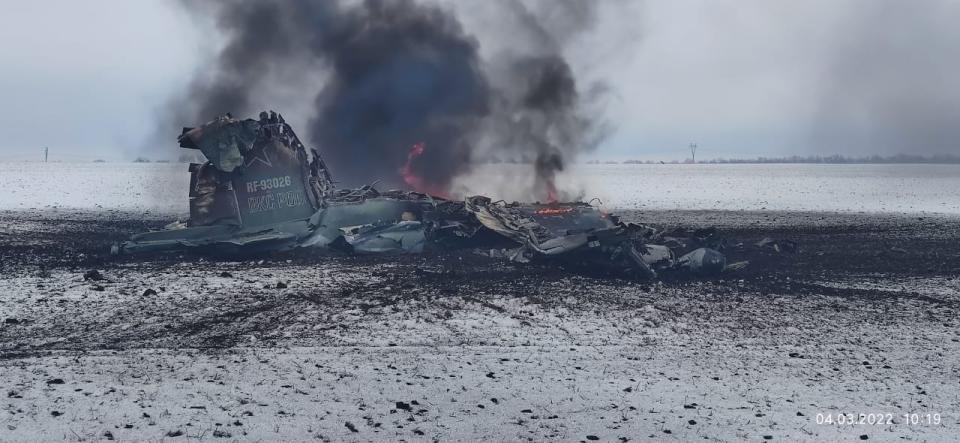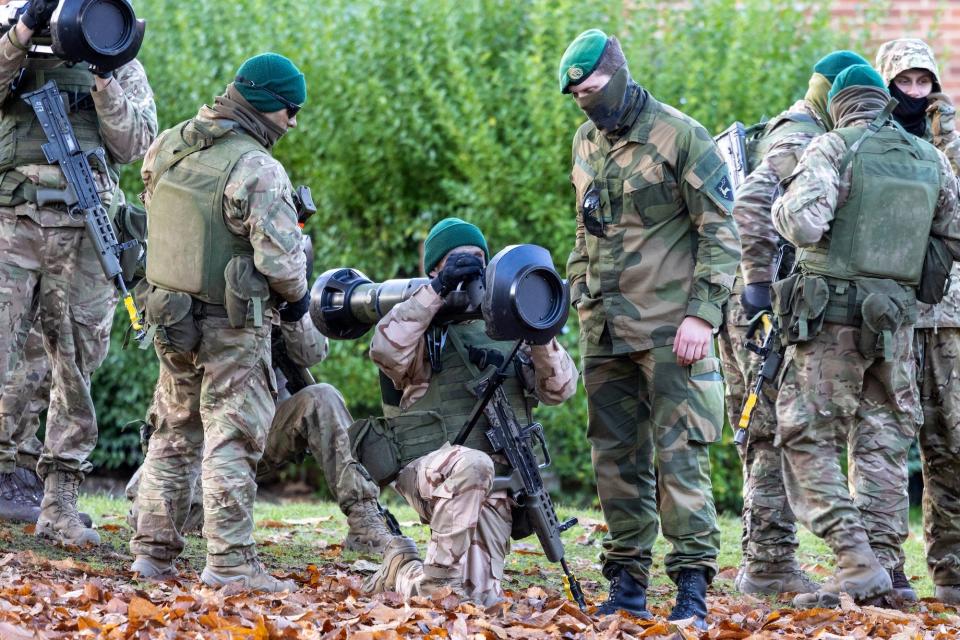Ukraine has its sights on US-made fighter jets, but those aren't Kyiv's 'most pressing need,' top Democrat says

Having received Western-made tanks, Ukrainians say their next goal is getting Western fighter jets.
Jets aren't the hardware Ukraine's military needs most right now, Sen. Jack Reed said Tuesday.
"Every piece of equipment that we put in, I think we have to ask very fundamental questions," Reed said.
After securing pledges for Western-made tanks, Ukrainian officials want Western-made fighter jets, but the top Democrat on the Senate Armed Services Committee said Tuesday that jets shouldn't be the top priority.
The US and other NATO members had long resisted supplying tanks to Ukraine out of concern about Ukraine's ability to use them effectively and about Russia's reaction. Several countries changed their minds in January, promising to send hundreds of tanks to Kyiv over the coming months.
Ukrainian officials now say Western fighter jets are the next hurdle, but based on current battlefield conditions, other weaponry would be more valuable, Sen. Jack Reed said Tuesday.
"I think you have to evaluate the equipment in many different ways. One, can it be used effectively? That also includes the training of the personnel using it. Can it be maintained effectively? Will it make a critical difference in the fight?" Reed, the committee chairman, said at a Defense Writers Group event.

Ukraine has aging Soviet-designed fighter jets but can only use them "infrequently," Reed said, noting the airspace there is "not permissive" due to the presence of Russian aircraft and air-defense systems around the country.
"It's extremely difficult to get up in the air," Reed added. "What they do is take off and fly at treetop levels until they reach their target, and they bounce up to the safest place they can drop the ordnance, drop it, and then get back. And they've lost some pilots doing that."
Under those conditions, pilots wouldn't be able to take advantage of the capabilities of the F-16s, which Ukrainian officials often cite as their top choice, Reed said, "so I think it's something that we have to continue to consider, but at this juncture, I don't think that's the most pressing need for the Ukrainian forces." (Asked on January 30 if the US would provide F-16s to Ukraine, President Joe Biden said "no.")
Ukraine operated roughly 82 MiG-29 and Su-27 fighter jets at the start of the war, as well as Su-24 and Su-25 ground-attack aircraft. After Russia's 2014 attack, Ukrainian pilots spent years preparing for the next war, training to disperse their aircraft and to fly at low altitudes to dodge Russian radars.
Russia's newer Su-30s and Su-35s still have technical advantages, however, and downed several Ukrainian jets in the first days of the war. Russia's air force adopted a more defensive posture as Ukraine went on the offensive in late summer and early fall, but Russia's long-range missiles and high-altitude operations gave its aircraft "significant freedom to menace Ukrainian aircraft" near the front lines, according to a Royal United Services Institute report on air operations during the first nine months of the war.

Ukraine has long asked for modern fourth-generation jets, like US-made F-15s and F-16s. Ukraine's air force said in March 2022 that these aircraft are "equipped with the advanced technologies used by the enemy, including advanced radars and modern missiles." It further argued its pilots could learn to fly those jets in weeks.
Calls to supply Ukraine with fighter jets picked up after the US, Germany, and other countries said they would send tanks. While sending those or similar jets would "provide a major boost" to the Ukrainian air force's ability to survive and operate against Russian aircraft, they would still be threatened by Russian surface-to-air missiles and have to operate at low altitudes when near the front lines, limiting their missile range and ground-attack capability, Justin Bronk, an airpower expert at the Royal United Services Institute, said in late January.
Those jets would also have new logistical requirements. "Logistics, training and personnel working on jets for Ukraine is capacity not used for other things like" surface-to-air missiles, vehicles, and ammunition, Bronk added.
Ammunition and armored vehicles would "be decisive," and "better and more" artillery and longer-range rocket systems would have "an immediate impact and be much more easily adapted into the Ukrainian fighting model," Reed said Tuesday.
Reed highlighted other forms of Western support, including advising and assistance provided "on an almost minute-by-minute basis."

"That advice, I think, is very, very helpful for them. We tend to focus on hardware rather than advice, assistance, intelligence, helping them connect their software, etc.," Reed added. "That might be more vital in this context than an F-16."
Tanks are only the latest hardware that Western countries have given Ukraine after expressing concern that it would be of limited use or provocative for Russia. That pattern, seen with long-range rocket artillery and advanced air-defense systems, leads some to believe the US and other countries will ultimately relent on fighter jets.
Reed said that having those repeated debates has not "materially prevented us" from aiding Ukraine and that the US's approach to security assistance has adapted based on battlefield conditions.
"It was a different fight a year ago, as relatively small decentralized teams of Ukrainians attacked Russian supply lines that had bogged down" because of poor logistics and poor planning, Reed said. "Now you're looking at much larger forces dug in and making all-out assaults against Ukrainian forces."
"In the spring, the goal is to prepare them for an offensive that will really shake Russian forces and displace them," Reed added. "Every piece of equipment that we put in, I think we have to ask very fundamental questions. Do they have the capacity to use it? Is it something that's going to make a difference? Is it a system that they can use effectively?"
This story has been updated with President Joe Biden's comments about providing F-16s to Ukraine.
Read the original article on Business Insider

